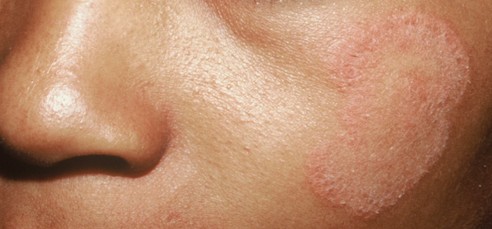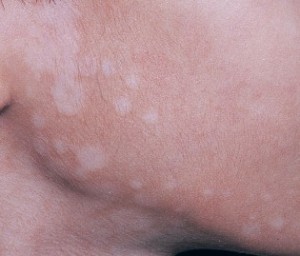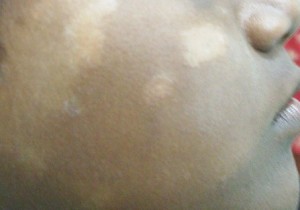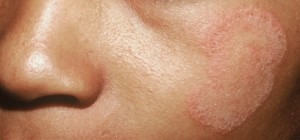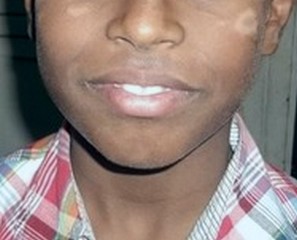Pityriasis alba is a condition commonly found in children and affects the skin. While the cause of pityriasis alba isn’t well known, it is however thought to be associated with eczema— another common skin disorder that causes scaly, itching rashes. People who have pityriasis alba tend to show red, flaky patches which appear roundish or oval in their shape. These patches will clear up when they are treated with moisturizing creams and at times, they disappear on their own. The condition leaves behind pale marks when the redness fades away.
Pityriasis Alba – Causes
It is not known what causes pityriasis to occur but according to a review published in 2009 in Pediatric Health, it indicated that pityriasis alba is often considered to be a mild form of eczema or atopic dermatitis. Eczema occurs when there is a reaction of the immune system which attacks the skin cells. It is like an allergic reaction however, it is not associated with allergies.
Majority of people outgrow cases of eczema and pityriasis alba by the time they are in adulthood. This skin disorder mainly affects the cheeks and although it can last for one year or more without having treatment, it will resolve on its own after puberty or when a child attains adulthood. There are however things that are thought to trigger pityriasis alba such as heat, humidity, smoke, stress, abrasive clothing, and heavily scented soaps and detergents.
Who are likely to have pityriasis alba?
Children and young adults in adolescent stage are the most vulnerable to the condition. About 2 to 5 percent prevalence is seen in children, and the frequent occurrence of the skin condition is seen more in the ages of 6 to 12 years. Children who are exposed to sun without protection with sunscreen are likely to develop the condition.
Children who take hot baths may also be susceptible to pityriasis alba. It is however not a contagious skin condition. Children with asthma, eczema, dry skin, and hay fever are also at increased risk of developing pityriasis alba.
What are the symptoms and signs?
Pityriasis alba appears as parches that range in number from 2 to about 20 patches, and they appear light colored or hypopigmented. The size of the patches is about 1 to 4 cm. The patches may have subtle surface patches or scales. At times, the condition may begin as some mildly itching pink patches, which often transition and form lightened patches on skin.
Although people think that this condition worsens in summer, this is likely to occur because of the sun exposure. The patches, while commonly seen occurring on cheeks, they can affect other parts of body such as the neck, arms, and upper middle of body. After several weeks, the pale pink spots might fade away and form white patches. These patches are likely to clear within several months but they could also last for a couple of years.
While in summer sun exposure, the surrounding normal skin turns and assumes a tan color, the patches themselves do not assume the tan color after being exposed to sun, but they tend to be more noticeable at this time. Covering the skin with sunscreen can make the patches less noticeable in times of summer months.
The patches will clear on own their own without needing treatment, but they can also be treated using cream products. However, they can reoccur causing a child to have treatment with creams again. In most cases, the conditions will resolve for good by the time a child reaches adulthood.
Pityriasis Alba – Treatment
There may be no need to have treatment since the condition can subside and disappear on its own. Doctors usually prescribe moisturizing creams and topical steroid creams including hydrocortisone to help in reducing skin discoloration or prevent dryness and itching. When your child seems to be experiencing discomforts or the skin condition is getting worse, you may want to take her to a healthcare facility for examination.
Similarly, if the condition spreads to other parts of body, there is a need to consult a doctor. To ensure that there is no fungus or yeast present; the doctor may scrape some scales from the affected skin and put them on slide for examination using a microscope. A potassium hydroxide or KOH preparation is done to allow the doctor to be able to tell if there are telltale signs of a fungus or yeast infection.
There is need to know that pityriasis alba isn’t caused by infection with fungus or yeast. Ultraviolet light therapy may also be used as a form of treatment. Self care measures are recommended by doctors such as using non soap cleaners and moisturizing soaps. A parent may also apply moisturizers like petroleum jelly or ointments and creams that are free of fragrances on the skin of the child. Sun exposure should be avoided and use of sunscreen is encouraged. Most of the self care measures are aimed at keeping the skin moisturized and preventing sun exposure.
